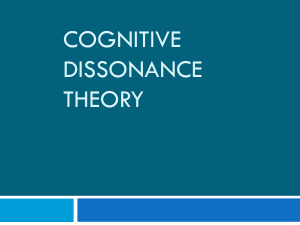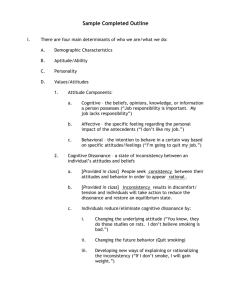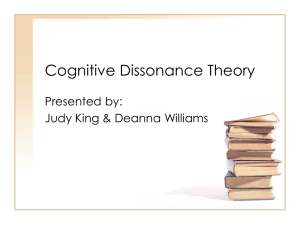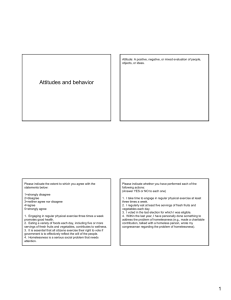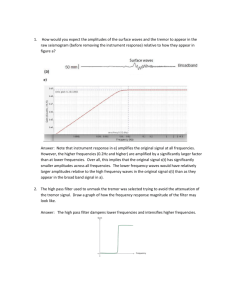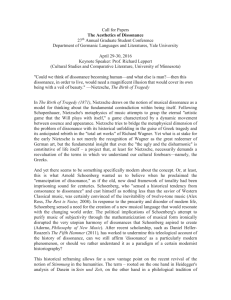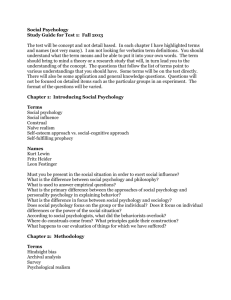Tonal Dissonance Curves
advertisement
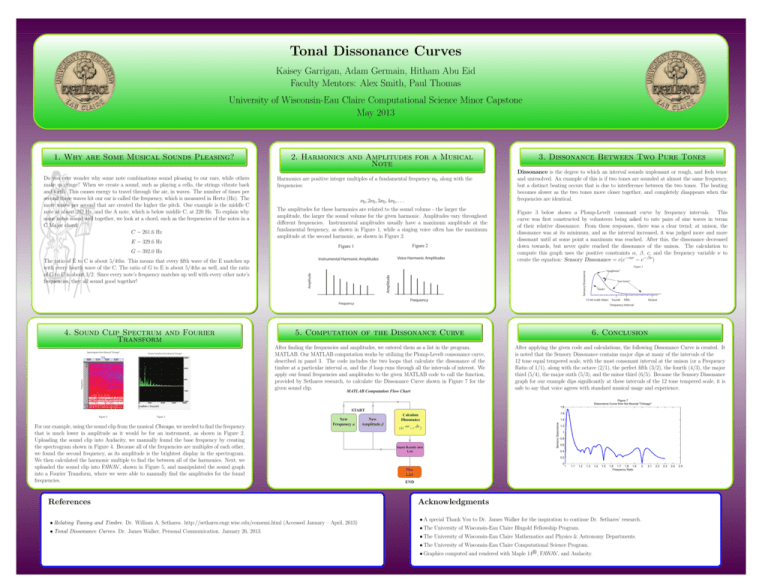
Tonal Dissonance Curves Kaisey Garrigan, Adam Germain, Hitham Abu Eid Faculty Mentors: Alex Smith, Paul Thomas University of Wisconsin-Eau Claire Computational Science Minor Capstone May 2013 1. Why are Some Musical Sounds Pleasing? Do you ever wonder why some note combinations sound pleasing to our ears, while others make us cringe? When we create a sound, such as playing a cello, the strings vibrate back and forth. This causes energy to travel through the air, in waves. The number of times per second these waves hit our ear is called the frequency, which is measured in Hertz (Hz). The more waves per second that are created the higher the pitch. One example is the middle C note at about 262 Hz, and the A note, which is below middle C, at 220 Hz. To explain why some notes sound well together, we look at a chord, such as the frequencies of the notes in a C Major chord: C − 261.6 Hz E − 329.6 Hz 2. Harmonics and Amplitudes for a Musical Note Harmonics are positive integer multiples of a fundamental frequency ν0, along with the frequencies: ν0, 2ν0, 3ν0, 4ν0, . . . The amplitudes for these harmonics are related to the sound volume - the larger the amplitude, the larger the sound volume for the given harmonic. Amplitudes vary throughout different frequencies. Instrumental amplitudes usually have a maximum amplitude at the fundamental frequency, as shown in Figure 1, while a singing voice often has the maximum amplitude at the second harmonic, as shown in Figure 2. Figure 2 Figure 1 G − 392.0 Hz Spectrogram from Musical “Chicago” Fourier Transform from Musical “Chicago” Frequency Time Figure 3 below shows a Plomp-Levelt consonant curve by frequency intervals. This curve was first constructed by volunteers being asked to rate pairs of sine waves in terms of their relative dissonance. From these responses, there was a clear trend; at unison, the dissonance was at its minimum, and as the interval increased, it was judged more and more dissonant until at some point a maximum was reached. After this, the dissonance decreased down towards, but never quite reached the dissonance of the unison. The calculation to compute this graph uses the positive constraints α, β, c, and the frequency variable ν to create the equation: Sensory Dissonance = c(c−αν − c−βν ) “roughness” Sensory Dissonance Amplitude Frequency Frequency 4. Sound Clip Spectrum and Fourier Transform Dissonance is the degree to which an interval sounds unpleasant or rough, and feels tense and unresolved. An example of this is if two tones are sounded at almost the same frequency, but a distinct beating occurs that is due to interference between the two tones. The beating becomes slower as the two tones move closer together, and completely disappears when the frequencies are identical. Figure 3 Amplitude The ratio of E to C is about 5/4ths. This means that every fifth wave of the E matches up with every fourth wave of the C. The ratio of G to E is about 5/4ths as well, and the ratio of G to C is about 3/2. Since every note’s frequency matches up well with every other note’s frequencies, they all sound good together! Voice Harmonic Amplitudes Instrumental Harmonic Amplitudes 3. Dissonance Between Two Pure Tones “two tones” “beats” 12-tet scale steps: Fourth Fifth Octave Frequency Interval 5. Computation of the Dissonance Curve 6. Conclusion After finding the frequencies and amplitudes, we entered them as a list in the program, MATLAB. Our MATLAB computation works by utilizing the Plomp-Levelt consonance curve, described in panel 3. The code includes the two loops that calculate the dissonance of the timbre at a particular interval α, and the β loop runs through all the intervals of interest. We apply our found frequencies and amplitudes to the given MATLAB code to call the function, provided by Sethares research, to calculate the Dissonance Curve shown in Figure 7 for the given sound clip. MATLAB Computation Flow Chart After applying the given code and calculations, the following Dissonance Curve is created. It is noted that the Sensory Dissonance contains major dips at many of the intervals of the 12 tone equal tempered scale, with the most consonant interval at the unison (or a Frequency Ratio of 1/1), along with the octave (2/1), the perfect fifth (3/2), the fourth (4/3), the major third (5/4), the major sixth (5/3), and the minor third (6/5). Because the Sensory Dissonance graph for our example dips significantly at these intervals of the 12 tone tempered scale, it is safe to say that voice agrees with standard musical usage and experience. Figure 7 Dissonance Curve from the Muscial "Chicago" 1.8 START Figure 5 For our example, using the sound clip from the musical Chicago, we needed to find the frequency that is much lower in amplitude as it would be for an instrument, as shown in Figure 2. Uploading the sound clip into Audacity, we manually found the base frequency by creating the spectrogram shown in Figure 4. Because all of the frequencies are multiples of each other, we found the second frequency, as its amplitude is the brightest display in the spectrogram. We then calculated the harmonic multiple to find the between all of the harmonics. Next, we uploaded the sound clip into FAWAV, shown in Figure 5, and manipulated the sound graph into a Fourier Transform, where we were able to manually find the amplitudes for the found frequencies. New Frequency α References • Relating Tuning and Timbre. Dr. William A. Sethares. http://sethares.engr.wisc.edu/consemi.html (Accessed January – April, 2013) • Tonal Dissonance Curves. Dr. James Walker, Personal Communication. January 26, 2013. New Amplitude ß c(c -αv - c -ßv ) Input Results into List 1.4 Sensory Dissonance Figure 4 1.6 Calculate Dissonance 1.2 1 0.8 0.6 0.4 0.2 0 1 1.1 1.2 1.3 Plot List 1.4 1.5 1.6 1.7 1.8 1.9 Frequency Ratio 2 END Acknowledgments • A special Thank You to Dr. James Walker for the inspiration to continue Dr. Sethares’ research. • The University of Wisconsin-Eau Claire Blugold Fellowship Program. • The University of Wisconsin-Eau Claire Mathematics and Physics & Astronomy Departments. • The University of Wisconsin-Eau Claire Computational Science Program. • Graphics computed and rendered with Maple 14r, FAWAV, and Audacity. 2.1 2.2 2.3 2.4 2.5

